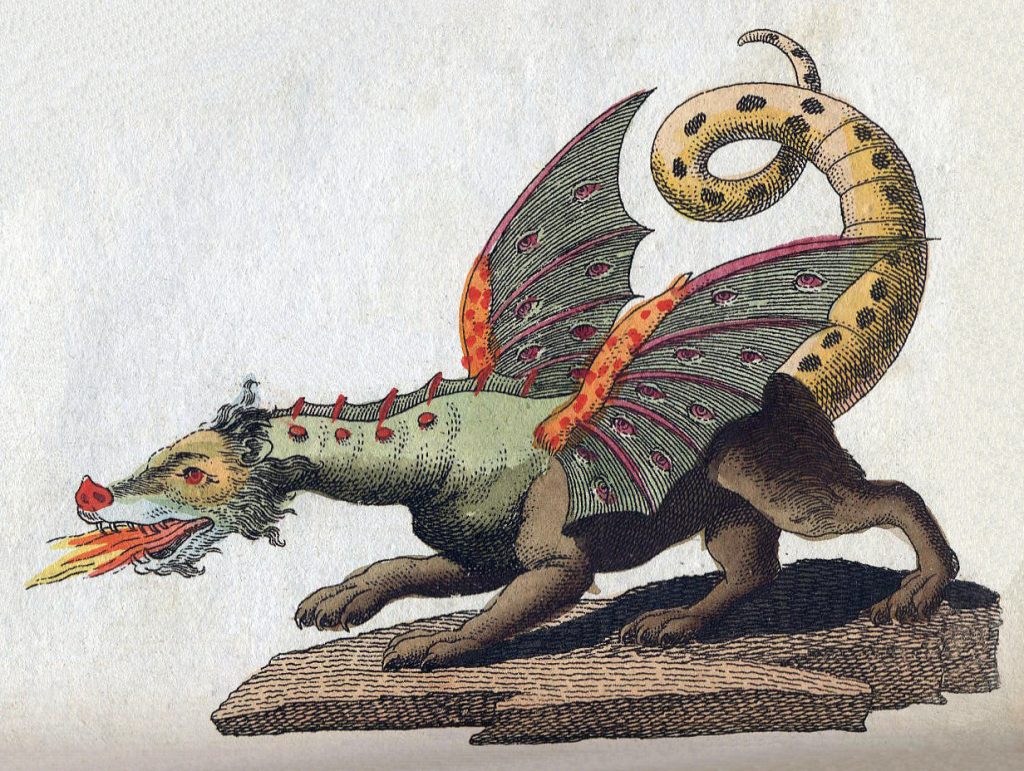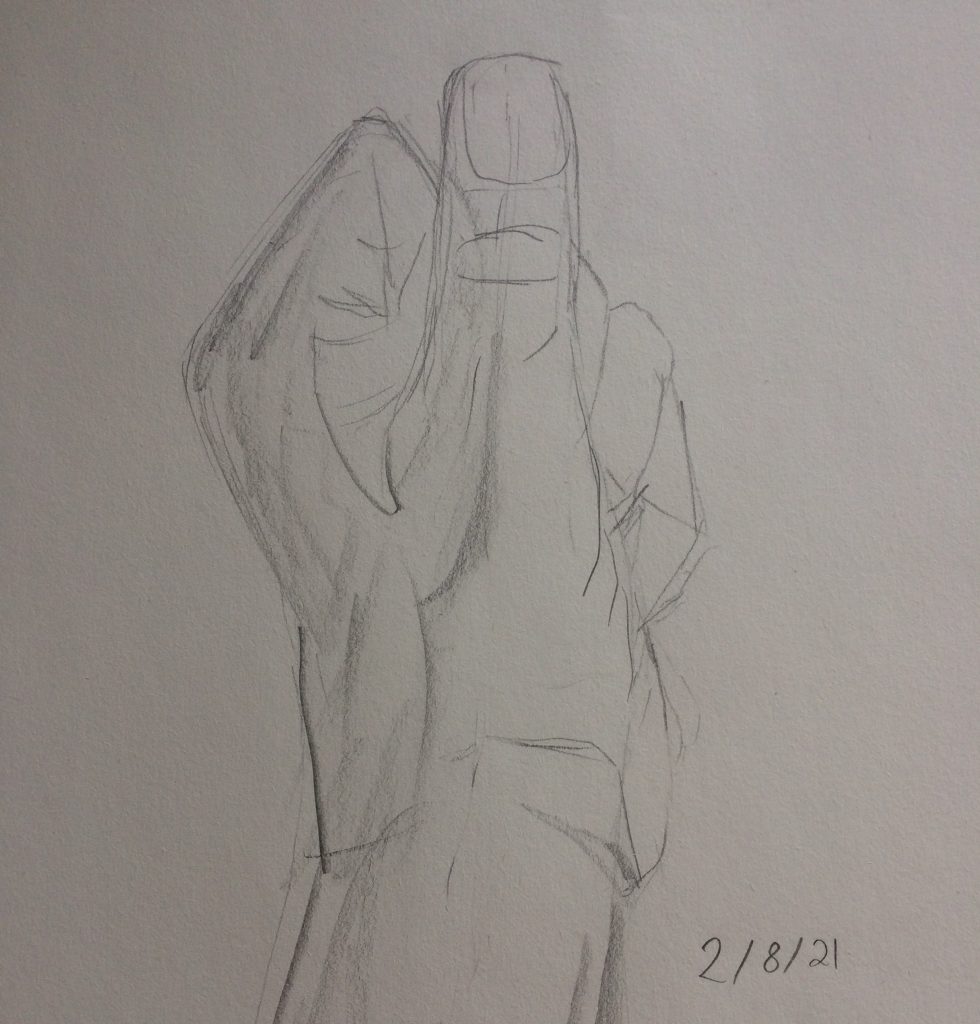‘Oh, “philosophy”. You know. When you try to imagine a mirok [small pink potato] without the least reference to any you have eaten or will eat.’ (Vladimir Nabokov)
A concept is a tool for thinking about things. In fact, when we “conceptualize” something we think of it as an “object” — not just any old thing but a thing that can be known. When we imagine facts, we’re actually imagining things in objective relation to each other, things arranged in ways that can be known, not just by ourselves, i.e., subjectively, but by any similarly qualified peer, i.e., objectively. We will usually gain this knowledge by means of some sort of observation, and an observation is just an experience that contains a judgment. We see something that might be a big lizard, but we observe that it has wings and breathes fire. To do this — to make an observation — we needed concepts (wings, fire, breath) and to make sense of it we need further concepts (dragon, fiction, fantasy). We can’t observe a dragon, i.e., experience something as a dragon, i.e., see it and deem it a dragon, without the relevant concept of a dragon and its dragon parts and the fantastical universe to which it belongs. We bring them together in our imagination, along with our experiences, and make up our minds. That’s how concepts work. That’s what thinking is.
But how can we imagine the concepts themselves? How can we think about the tools we use to think about our experiences?
We can say that the aim here is to imagine an object without a thing that lets us experience it. Put a potato on the table in front of you (if you don’t have one handy, at least notice how easy it is to imagine). If you want to imagine the concept of potato, begin by imagining this one to be bigger than it really is, or smaller, or rounder, or lumpier, or browner, or pinker; you can even touch it and imagine it softer or harder, rougher or smoother. In all these variations, it’s still a potato. Imagine cutting it into slices or sticks, or mushing it or baking it or boiling it. Imagine all the things you can do to this potato without changing the fact that it is a potato. It didn’t have to be this particular thing, in this particular state, in order to be a potato. The concept of potato covers all of those variations but, right here and right now, this thing can be only the potato you actually see in front of you. Potatoes can be mashed, but this one, let’s say, isn’t a mashed potato.
This still doesn’t produce an image of the concept of a potato. We’ve just got a bunch of images of potatoes of various sizes in different states of disrepair. To get at the concept we have to imagine the principle that unifies these disparate images. Your potato is of a particular size; you can say “It is a big potato,” or “It is a small potato,” and one of these statements may be true. It’s also a particular color; “It is a pink potato,” or, “It is a brown potato,” may be true. But what is true of all potatoes, no matter what size, shape or color they are? You can actually begin by imagining, sizes, shapes and colors that potatoes can’t be, at least not “normally”. These ranges are part of the concept of a potato. (Norms don’t just apply to people, we might say; potatoes, too, can be normal or abnormal.) Consider, “This is a normal potato,” and, “This is an abnormal potato.” These statements can also be true or false, and they tell us something about the limits of the concept. But even the weirdest potato is a potato. What makes it so?
Consider: “This is a potato like any other potato.” Compare: “This is a potato unlike any potato I have ever seen.” Well, it can’t be completely unlike any other potato because something allowed you to call it a potato. The concept of a potato is, perhaps, the resemblance between all potatoes. And it may actually be the chain of resemblances (what Wittgenstein called “family resemblances”) that links them together, i.e., not some feature they all share, not some “essence of potato” …
There are philosophers who would debate these issues with you as long as you like and I encourage you to seek them out and do so. But if you want to get on with your work, if you want to know something about potatoes, you’re going to have to discipline your imagination at some point. When you imagine a concept you will be imagining a kind of filter, a distinction between potatoes and everything else, a means to judge something a “proper potato” and something else “not a potato”. You’re imagining a kind of machine for sorting the things in the world, for identifying all the potatoes in a scene. Even a machine for counting them. And inside this machine, there may be finer machines that sort all the potatoes into “big” and “small” and “medium” ones. You then imagine pouring a bag full of objects into the top of the machine, and out they come — big, small, and medium potatoes over here, and everything that was never a potato over here. That’s what concepts do. They help you think about things.
As you are doing all of this — and not just with potatoes, but with innovations, and organisations, and managers, and budgets, and assets, and poems, and novels, and revolutions, and atoms and stars, and everything else you might think about in your studies — notice that the big and small machines that help you think are working together and are themselves situated in a world, a world you share with your peers. Dragons populate fictional worlds, but not all fictional worlds, only the “fantastic” ones, let’s say. Potatoes are much more common; they can be found in real life and in fiction, in true stories and in tall tales. Part of the concept indicates the world in which it can be meaningfully applied — a space of possibilities. In fact, the concept makes things meaningful in their respective worlds.
“The essential thing about a poet,” said Ezra Pound, “is that he build us his world.” Imagining your concepts, and especially writing them down, means imagining your world as a kind of building. Your concepts are the structure of that building and your discipline (your “field”, your “science”) has a language made out of the concepts you share with your fellow students and scholars. “Language,” said Heidegger, “is the house of being.” Imagine moving in.

